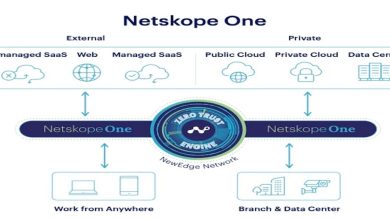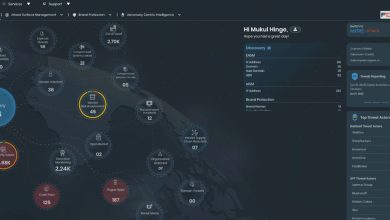Fortifying Singapore’s Smart Nation: A 360-Degree Blueprint for IoT Security

Attributed to Simon Trend, Group Managing Director – Americas, APAC and MENA, Wireless Logic
In the heart of Southeast Asia’s tech hub, Singapore’s skyline isn’t just defined by its iconic architecture, but by an invisible network of billions of connected devices. From the smart sensors monitoring water quality in Marina Bay to the IoT-enabled logistics systems powering our world-class port, the Internet of Things (IoT) is the silent force propelling Singapore’s Smart Nation vision forward. But as our city-state races towards a hyper-connected future, a shadow looms – the ever-present threat of cyber attacks.
The rise of IoT cyber attacks
The global surge in IoT-related cyber incidents is alarming. SonicWall’s Cyber Threat report reveals a staggering 77 million IoT malware attacks globally in the first half of 2023, a 37% year-on-year rise. Meanwhile, the World Economic Forum’s ‘State of the Connected World’ 2023 report, which examines governance gaps on IoT and related technologies, identified cybersecurity as the “second-largest perceived governance gap”. This trend is particularly concerning for Singapore, where its advanced digital infrastructure and high IoT adoption rate makes the country a more attractive target for cybercriminals.
From ransomware and malware to sophisticated device spoofing and man-in-the-middle attacks, the threats to the IoT ecosystem are diverse and evolving. The potential impact extends beyond mere data breaches; it could disrupt critical national infrastructure, compromise public safety systems, and erode trust in our digital economy.
Singapore’s Proactive Stance on IoT Security
Recognising these challenges, Singapore has taken proactive steps to fortify its IoT defences. The Infocomm Media Development Authority (IMDA) has released a comprehensive IoT Cyber Security Guide, providing a robust framework for securing IoT deployments. Additionally, the Cyber Security Agency of Singapore (CSA) has introduced the Cybersecurity Labelling Scheme (CLS), which helps consumers make informed decisions about the security features of IoT devices.
These initiatives set a strong foundation, but the onus is on businesses to implement comprehensive security measures. It is imperative for organisations to adopt a 360-degree approach to IoT security – one that goes beyond compliance to create truly resilient IoT ecosystems.
The 360-Degree Framework: Defend, Detect, React
IoT security must take a 360-degree approach to defend solutions and detect and react to any security incidents. This holistic approach to IoT security should include processes and people, as well as technology, and extend to choosing partners with strong reputations and security credentials.
1. Defend
It begins with defence, which starts with preventing unauthorised access to devices, cloud infrastructure and data. This involves implementing robust authentication measures, such as IoT SAFE, an interoperable, industry-wide SIM security standard for uniquely identifying devices for authentication. Defence measures should also include secure communication, outage resilience, software updates, data security policies and compliance with market and industry regulations.
2. Detect
Detection is essential because, no matter how robust defence measures are, companies must still monitor device behaviour, analyse network traffic and use analytics to make informed decisions. These measures are needed to detect any potential breaches, anomalous activities or unusual behaviours. Warning signs of these can include altered target URLs or data usage that is out of the ordinary. Anomaly and threat detection systems can enhance cybersecurity by identifying the first signs of cyber-attacks against IoT systems, providing threat management measures, operational visibility, and supporting compliance efforts through real-time, AI-driven analysis. Such systems are becoming increasingly important components of comprehensive security frameworks.
3. React
Should detection measures identify any red flags, companies must react using pre-planned countermeasures, some of which may be automated. Action can include quarantining and cleaning affected devices and applying corrective actions across all systems. Reporting breaches and anomalies also fall under reactive measures.
In Singapore’s culture of preparedness, it is critical to also consider adding a fourth dimension to this framework: Rehearsal. Regular simulations of cyber incidents can help organisations fine-tune their response strategies, identify weaknesses, and ensure all stakeholders – from IT teams to C-suite executives – are prepared to act swiftly and decisively.
Companies can call on tools and techniques to help them rehearse security scenarios. These include ‘digital twin’ virtual representations to model threats and ‘what if?’ workshops that step through scenario handling.
Securing Singapore’s Smart Future through Effective IoT security
Singapore’s journey to becoming a Smart Nation is built on a foundation of continuous improvement. This ethos must extend to IoT security. Regularly updating security protocols, staying abreast of emerging threats, and fostering a security-first culture within organisations are crucial steps in maintaining a robust IoT ecosystem.
As the country continues to lead in smart city innovations, the security of IoT infrastructure becomes increasingly critical. By adopting a comprehensive, 360-degree approach to IoT security – one that aligns with national guidelines while going beyond mere compliance – businesses can play a pivotal role in safeguarding Singapore’s digital future. In this era of unprecedented connectivity, let’s ensure that our Smart Nation vision is built on a foundation of uncompromising security. The future of Singapore’s digital economy depends on it.




